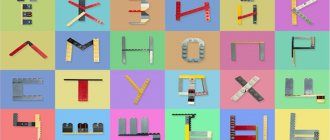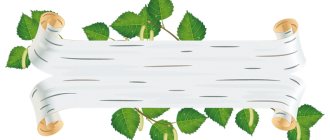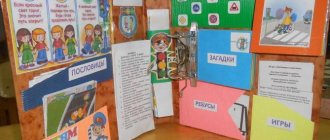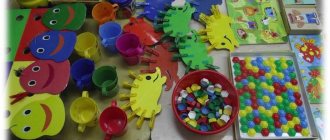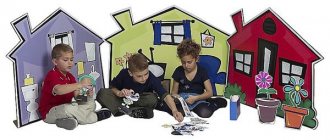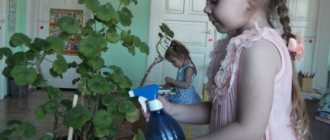The world of spiders and ladybugs
An egg tray works well for modeling. It is easy to cut, pierce, and glue.
You will need:
- egg trays;
- wire;
- self-adhesive paper;
- acrylic paints
For clarity, see pictures of crafts made from natural materials.
- Treat egg trays by spraying alcohol on them.
- Cut off the top of the hemispheres. This will be the body of the insect.
- Apply paint and let dry well.
- Stick on the eyes. Pre-prepare them from self-adhesive film.
- Cut the wire into pieces 3–4 centimeters long and form them into legs.
- Pierce the places where the legs are attached in the egg hemispheres.
DIY crafts on the theme of ecology are ready.
The task of teachers is to instill in children a competent attitude towards nature and its resources. This topic is addressed in kindergartens and schools. Parents often learn a lot of new information from their children.
Master class: bouquet of flowers in a vase
Another option for making decorative items from waste components.
This creativity will be interesting to 5th grade students and anyone who likes to make homemade interior items.
Target
To clearly demonstrate that most people throw away plastic bottles in vain. This is a very good material for creativity. With the help of your imagination and simple improvised components, you can give a second life to many household wastes.
You will need:
- egg trays;
- sticks for stems or wire;
- gouache;
- kefir bottle;
- satin ribbon;
- bag or foil packaging (needed to create an ornament on the vase)
Step-by-step making of crafts on the topic of ecology with your own hands
- Separate the pieces of egg packaging. You need 15-21 hemispheres.
- Fold in half, rounding off sharp corners.
- For one flower you will need 3 such blanks.
- We form leaves on two cups, straightening them with our fingers.
- At the third cup, cut off the lower hemisphere and roll up the resulting ribbon with petals.
- Color the resulting details. Dry well.
- Add a drop of glue to the base of the cups and connect the elements one by one. Place a bead in the core.
- Color the stem green. Dry.
- Place the buds on the stem.
A craft on the theme of taking care of nature is almost ready. There are a few steps left.
- Remove any labels from the bottle.
- Cut off the top of the container.
- Cut out the pattern from the packaging.
- Glue a strip of the pattern to the top and bottom of the vase, and tie the middle with a satin ribbon.
- Place the roses in the vase.
Folk art crafts do not require economic costs and will develop creativity and imagination. Such works are designed to inspire people to reuse unnecessary things. Recycled, they can last much longer. Caring for natural resources plays an important role in ecosystem restoration. Many household wastes have a very long decomposition period, which negatively affects the ecology of the planet.
Below are pictures of crafts made from natural materials.
Layout of the natural area
Such prototypes of the environment develop in children concentration, observation, and keen interest in the environment. The main goal of ecology mock-ups is to study the fauna and habitats of animals. When creating it, you needed boxes, cotton wool, branches, leaves, flowers, grass. In general, everything that can be found in the nearest forested area. Your imagination will be needed here. The background of the model was decorated with nature appliqués.
They were used to create trees, mountains, the sun and the sky. Additionally, wire and PVA glue will be useful. Fauna can be represented by any small toys. Depending on what fragment of the planet you want to recreate, use mammals: cows, horses, pigs. For cold continents, take penguins. For hot countries - monkeys and parrots. The photo shows options for crafts made from environmentally friendly materials.
Forest crafts
Boletus from cereals
For the mushroom you will need:
- multi-colored cardboard;
- template for boletus;
- green and red lentils;
- millet;
- semolina;
Step-by-step actions
- Cut out a template from plain paper.
- Transfer the image onto colored cardboard using a pencil.
- Apply PVA to part of the boletus cap and place red lentils on it. Press down a little with your fingers.
- Apply glue to the remaining half of the cap and distribute the beans in the same way. For a clear example, use pictures from natural materials in grades 2–4, made by elementary school students.
- Fill the inside of the cap, which is visible, with glue and millet.
- Cover the mushroom stem with semolina and PVA.
- Form a clearing around the boletus using PVA and green beans.
- Dry. The nature-themed craft is ready.

